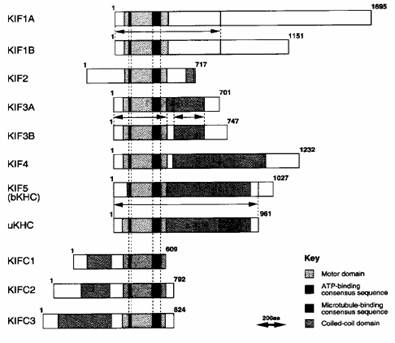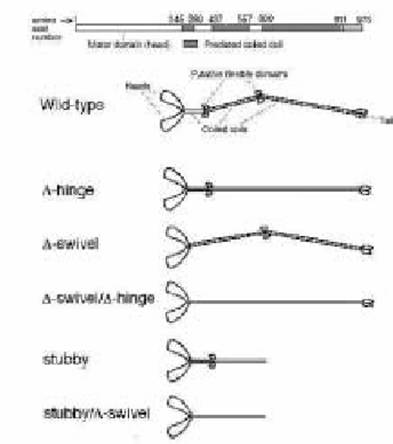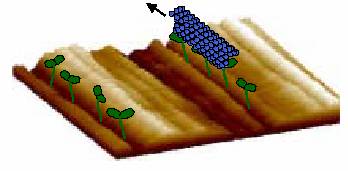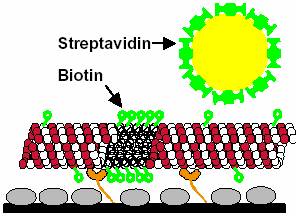
Proposed Project
Within cells Motor proteins are a proof of active nanoscale transport of cargo. Of all the motor proteins Kinesin is the most processive .
Proposal: To use Kinesin to actively transport cargo over long distances in non biological environments.- A monorail on a nanoscale!
Purification and Manipulation of Kinesin: cDNAs encoding Kinesin will be cloned and characterized using the murine brain cDNA libraries using the baculovirus Sf9 cell system


Manipulation of Kinesin: Deleting certain regions in the gene produces mutant proteins with different mechanical and chemical properties. Removing the hinge regions changes stiffness in the tail while removal of the tail influences the ATPase rate.Tail length influences the binding to cargo surfaces.

![]()
Attachment of Kinesin to tracks and control of direction
An adsorption resistant surface such as Teflon is heat treated to create tracks or parallel grooves along which kinesin is adsorbed. An electric or magnetic field is used to control the direction of movement.

Selective adsorption of motor proteins on to parallel grooves of teflon
Attachment and loading of cargo
Specific tags such as polyhistidine tag binding to nickel-coated cargoes, antigen- antibody binding, protein ligannd-binding. Here I will use Streptavidin coated cargo and biotinylated microtubules
Non specific tags can be used as negative controls
Positive controls: Streptavidin coated beads loaded on to biotinylated microtubules in solution

Controlling the motion
Questions concerning my miniature train!
How is the cargo unloaded? In biological systems phosphorylation has been suggested. In non biological systems this bond breaking probably can be triggered by changes in pH, use of certain chemicals or enzymes or UV.
Applications
Tissue remediation?
Information technology? Motor transport of semiconductor nanoparticles (quantum dots) into arrays for information technology?
Sensors?
Home Introduction Transport Systems Types of Motor Proteins Motors at Work Motility Assays Questions